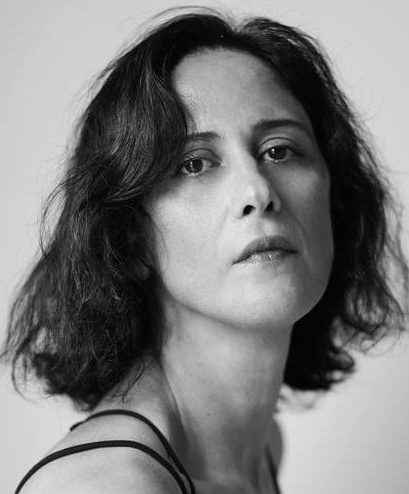
1,000-year-old Hebrew Bible Found in Cairo Synagogue
1,000-year-old Hebrew Bible Found in Cairo Synagogue
March 3, 2020
The Times of Israel – In July 2017, Ben-Gurion University Prof. Yoram Meital stumbled upon a handwritten 1028 CE biblical codex that was lying abandoned on a shelf in a Cairo synagogue. The prized artifact had been lost to scholars for nearly 40 years.
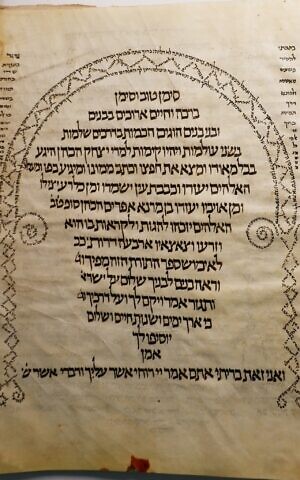
This detailed illustration lists the name of the scribe, Zechariah Ben ‘Anan, as well as the owners of the codex that was rediscovered in 2017 by BGU historian Prof. Yoram Meital in a Cairo synagogue. (Yoram Meital)
Wrapped in a simple white paper of the sort one finds on tables in small eateries, at 616 pages the Zechariah Ben ‘Anan Manuscript (ZBAM) is one of the era’s most complete and preserved examples of the “writings,” the third and concluding section of the Hebrew Bible.
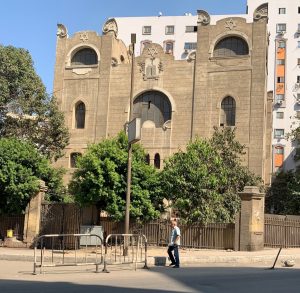
Moussa (Moshe) Der’i Synagogue, Cairo, 2019. (Yoram Meital)
Discovered in the 1933 Karaite Moussa Der’i Synagogue, the manuscript not only holds the complete writings, but also another 12 pages of Mesorah, or commentary on the biblical text, including notes on the trope, or tune in which it is to be read, and nikud, or a vowel and consonantal vocalization of the words.
Based on notes left by Ben ‘Anan, we know it was completed in the Jewish year 4788, which corresponds to the Gregorian year 1028. According to Ben ‘Anan’s notes, we also see his computations of how many verses he wrote, and that it was once part of a complete Hebrew Bible — the other two sections of which are gone without a trace.
The Cairo manuscript, written just after the writing system’s codification, is one of the earliest known examples of the Tiberias school, which trained famous scribes in the ninth to 11th centuries, including Ben ‘Anan.
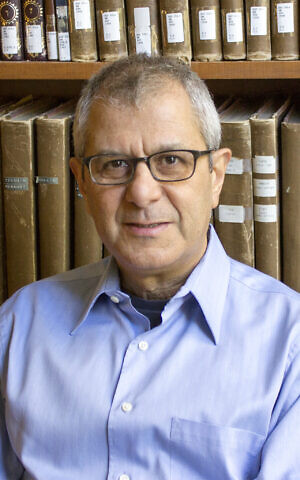
Prof. Yoram Meital, Department of Middle East Studies
“Everything that has to do with grammar and punctuation of ancient Hebrew is based on this school,” said Meital, an expert on Egyptian and the Middle Eastern history. “When they developed a system of writing and created a school for how to correctly read the Bible, it was a dramatic shift because since then our Bible was born and developed.”
There is some divergence in the ZBAM writings from what is standard in Hebrew Bibles today. The Book of Chronicles appears as one continuous book, rather than two sections, and the book leads the writings instead of concluding them. Likewise, the Books of Ezra and Nehemiah are joined as one account.
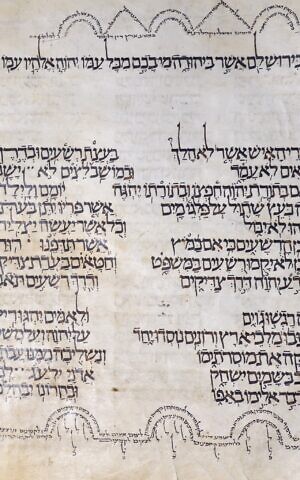
Psalm 1 from the Zechariah Ben ‘Anan codex (Yoram Meital)
Despite historically wretched storage conditions, only a few dozen pages are damaged. Before the Moussa Der’i Synagogue, the ZBAM was housed with other (now missing) precious manuscripts and Torah scrolls at the Dar Simcha Synagogue until 1967. In both synagogues, it was considered holy and used as an amulet of sorts by the congregations.
The next step, said Meital, is to turn a two-story building at Cairo’s central Shaar Hashamayim Synagogue compound into a library for Jewish heritage.
“We intend to take this space, to renovate it, and to open a library that will have two collections — one is something like 10,000 to 12,000 volumes that we already collected in Cairo and the second floor will be devoted to rare documents and manuscripts.”
Read more on The Times of Israel>>
See also a recent story on the discovery in The New York Times >>


